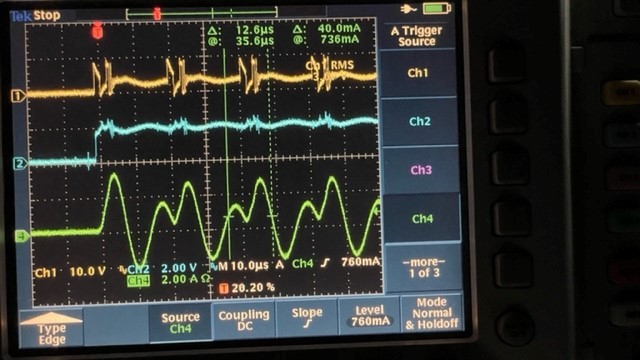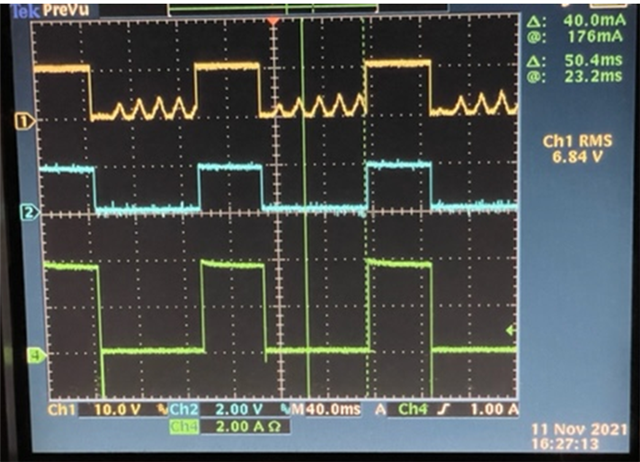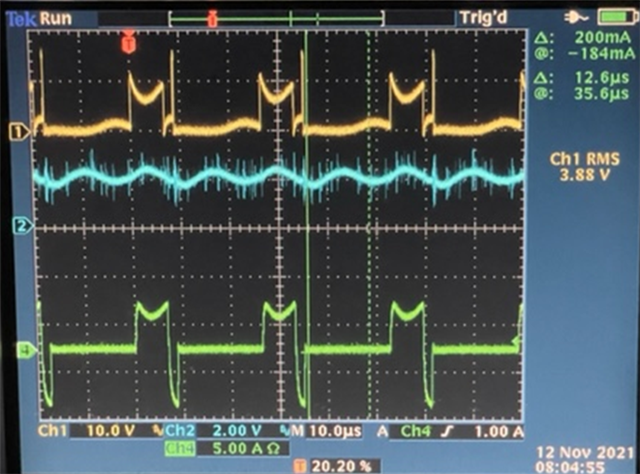I was able to test the DRV8848 in OCP (shunt resistors are shorted and current is exceeding 2A). I see the fault pin pulling low and the retry occurring at every 1.6ms -- all good when not in parallel mode.
When using parallel mode I see some different behavior. I understand each bridge has its own OCP monitoring and act independently, but I want to make sure what I am seeing is expected.
Yellow is the output
Blue is the nFAULT pin
Green is the current (measured with a current probe).
First picture: 1ms/div time scale. You can see the nFAULT pin asserted for 1.6ms (low), which is expected. The output is also low. The next interval is retry, fault pin is high, the output is with an odd waveform and so is the current. The duration of this interval is not consistent - it varies a lot. The pictures of the scope are a single shot.
Second picture is the same situation, but with 10us/div time base.
Is this behavior expected? Is it justified by the two H bridges interfering with each other?


Details of the setup:
VM = 8V
Load = 5A (electronic Chroma 63101)
Board: DRV8848 boosterpack
I appreciate the help!





